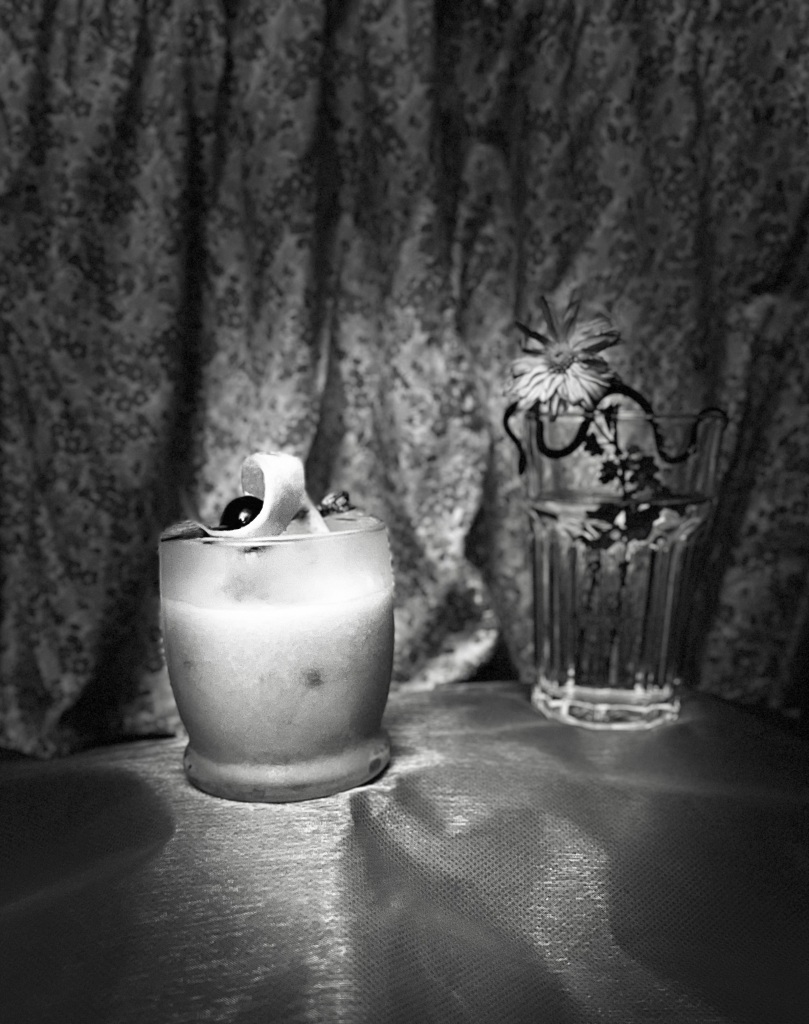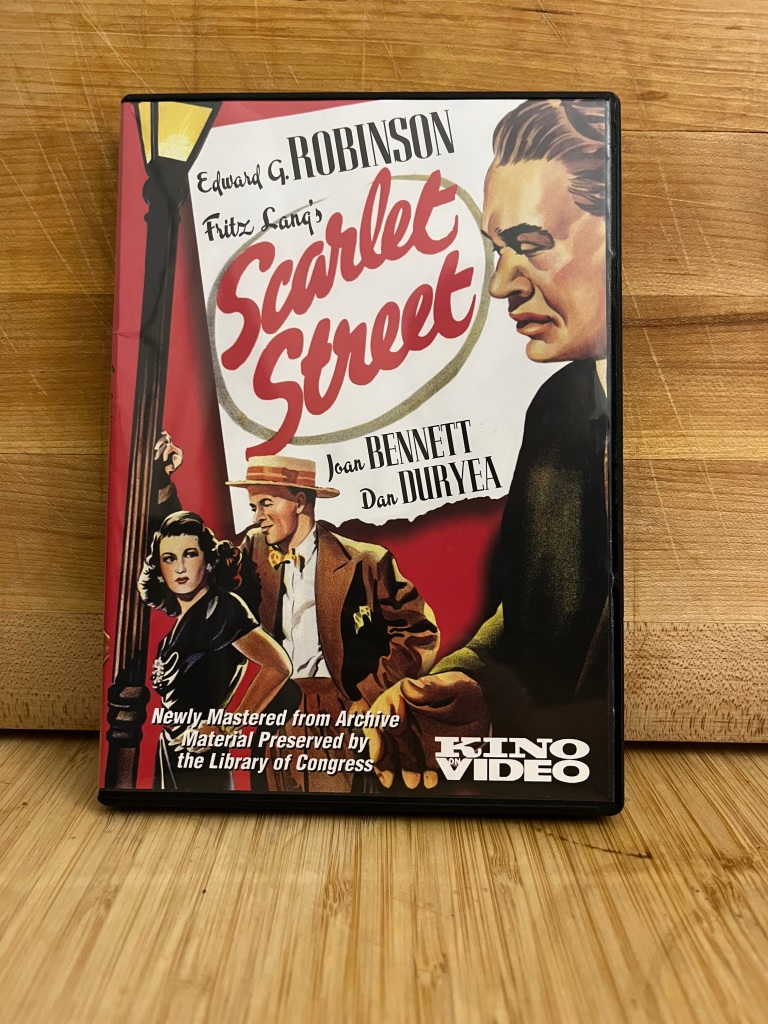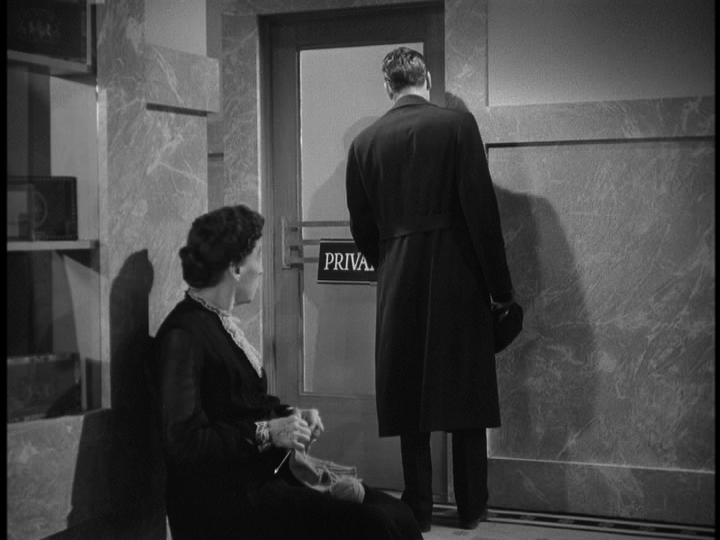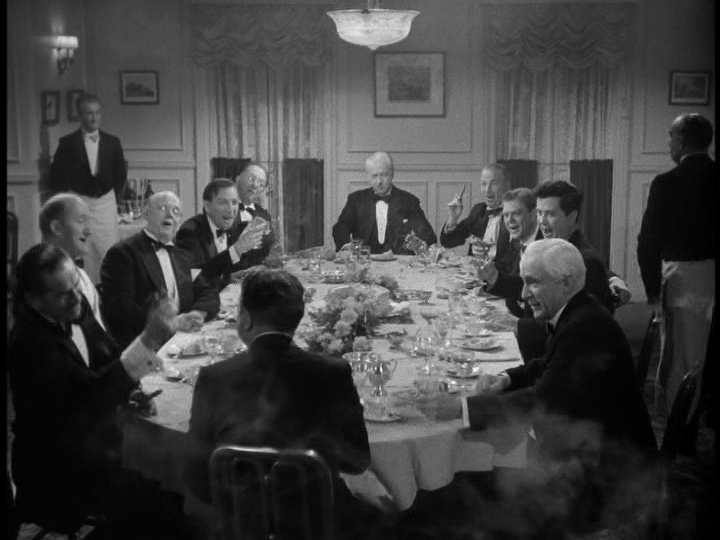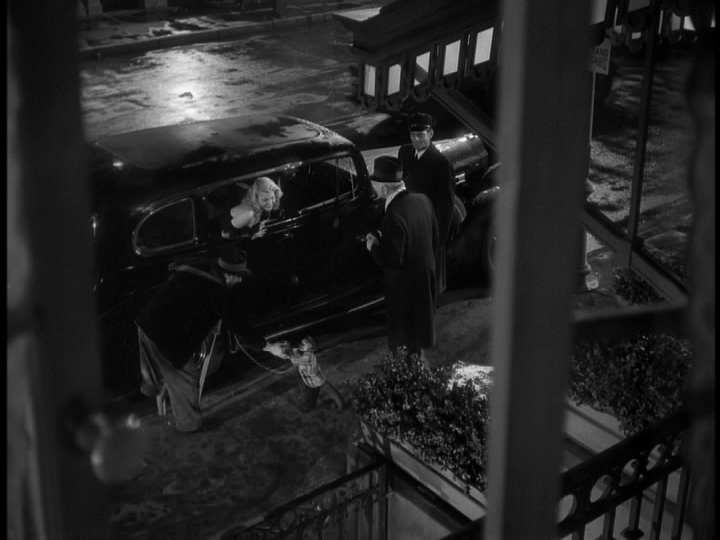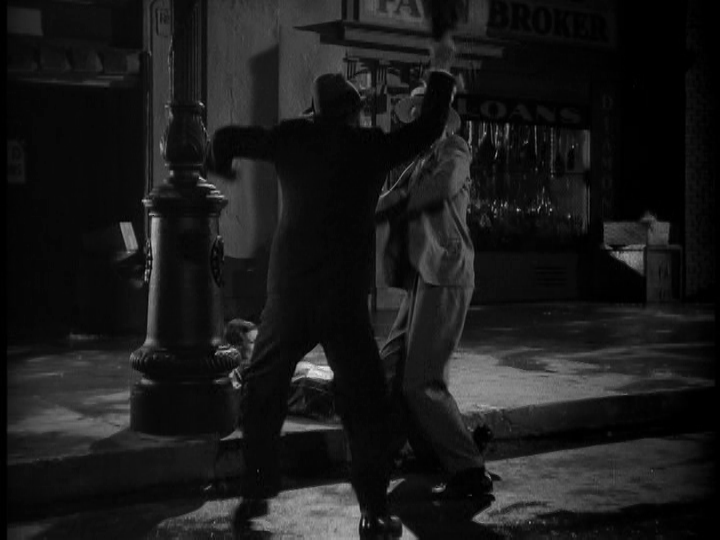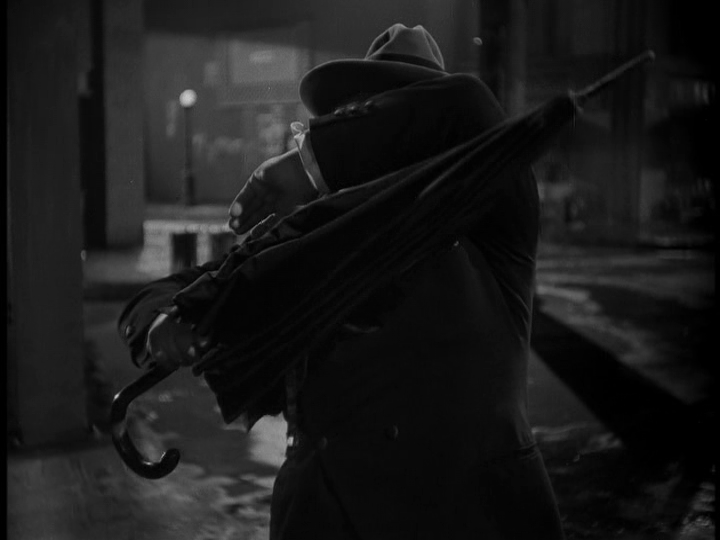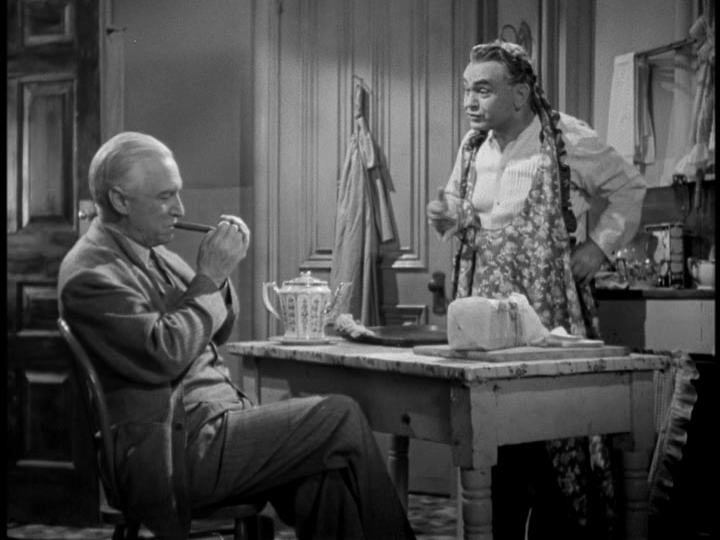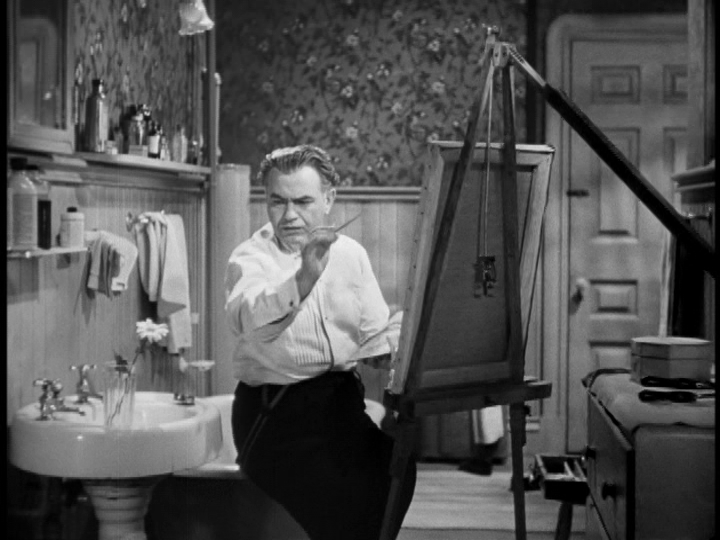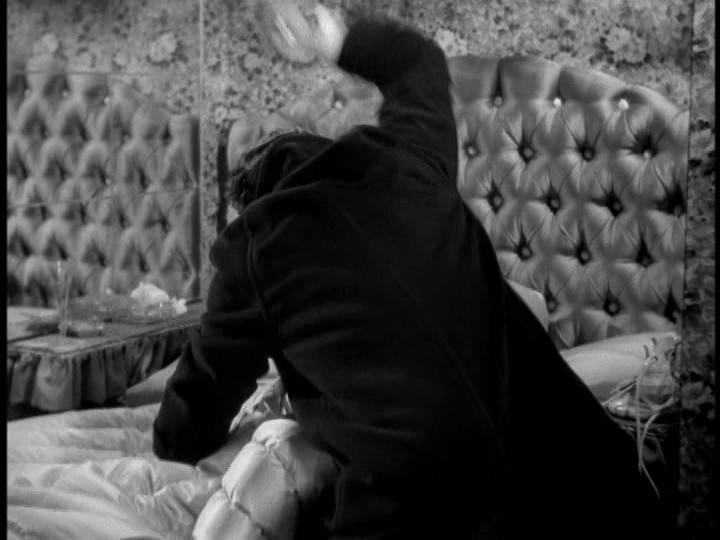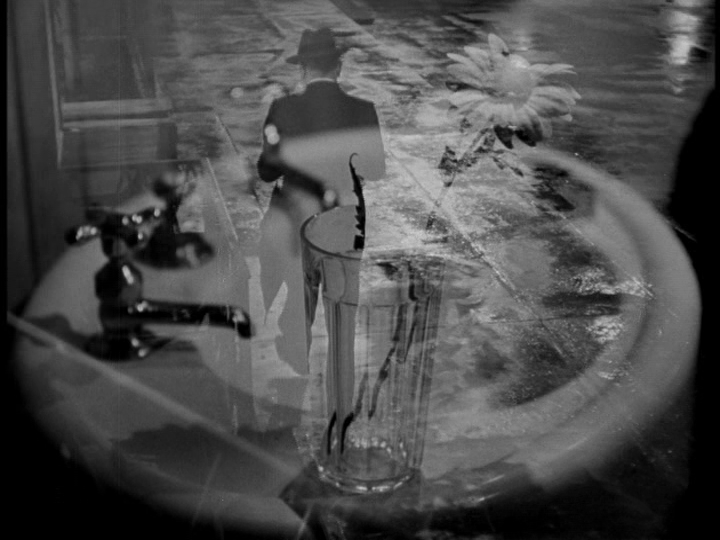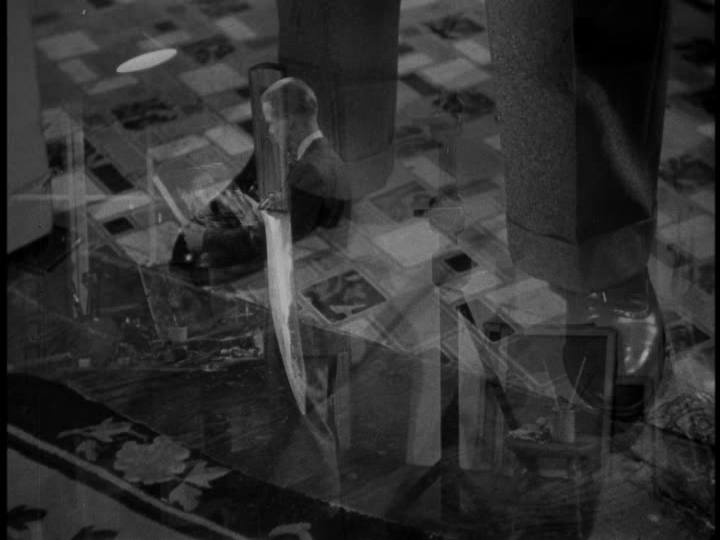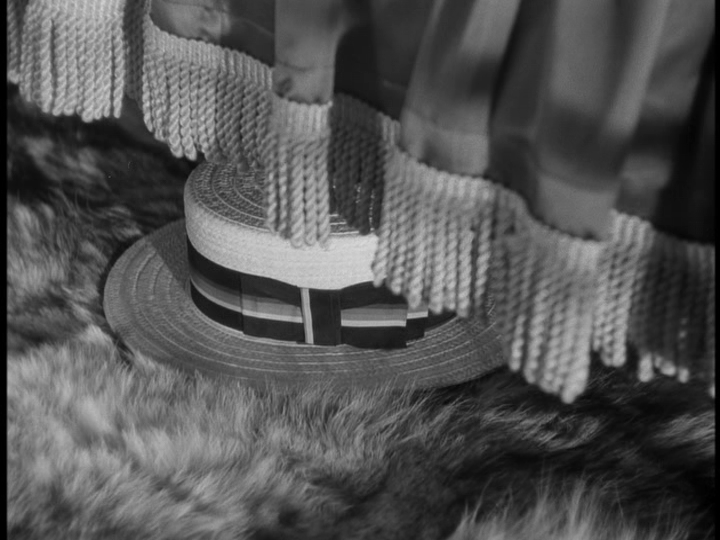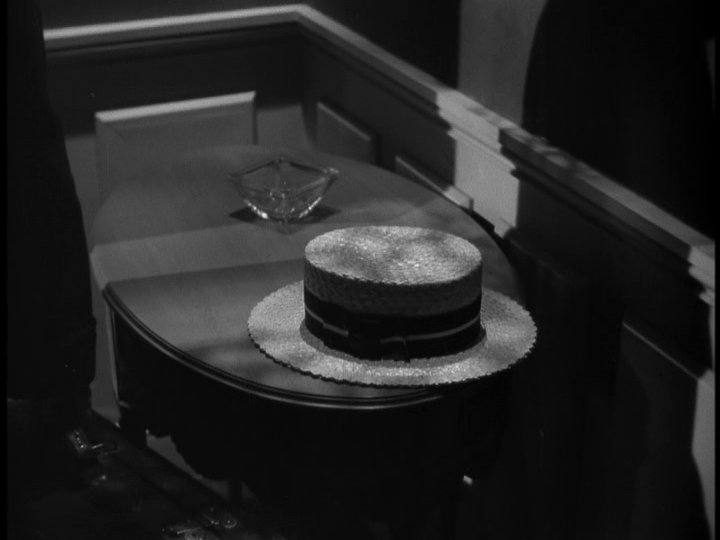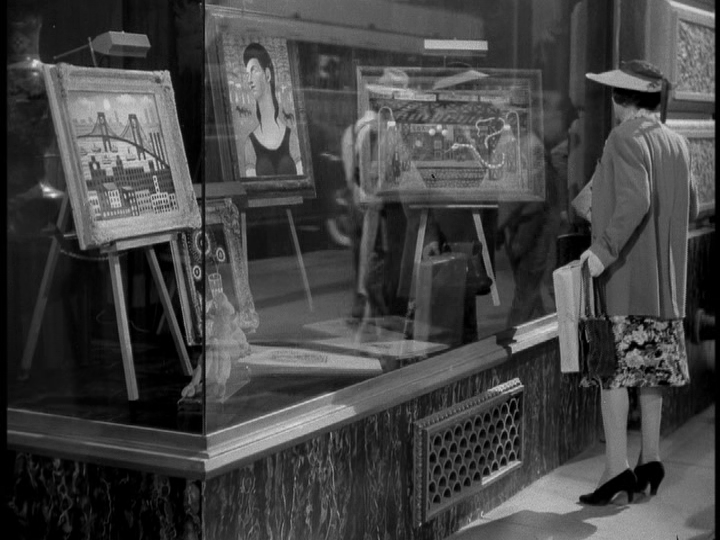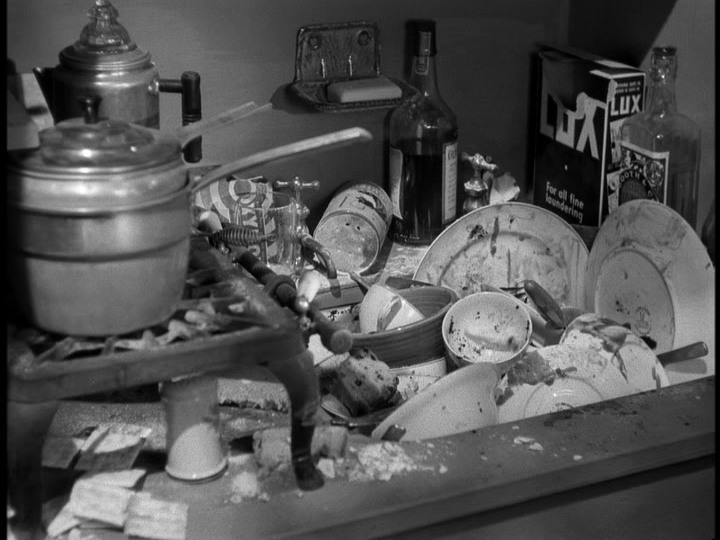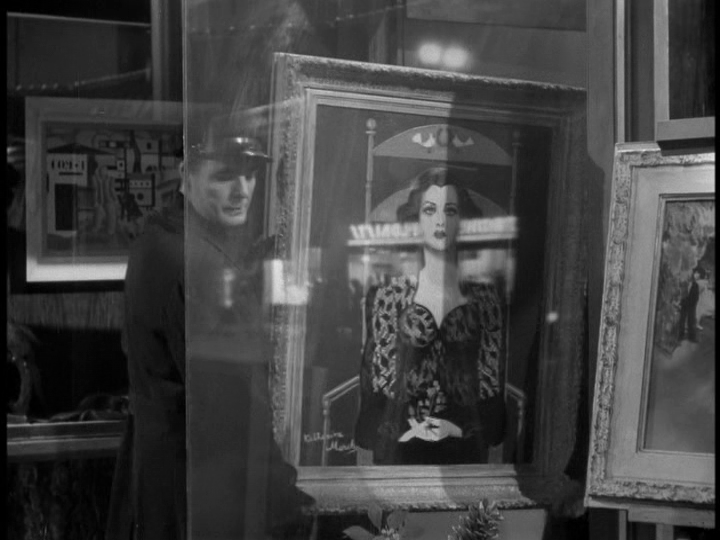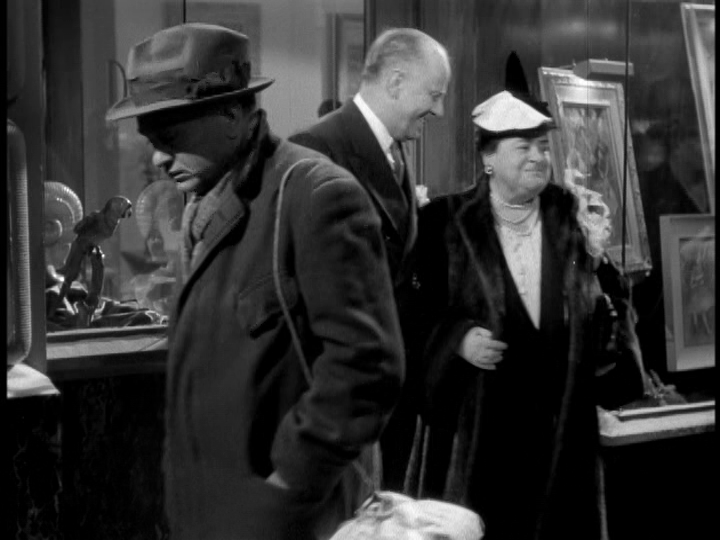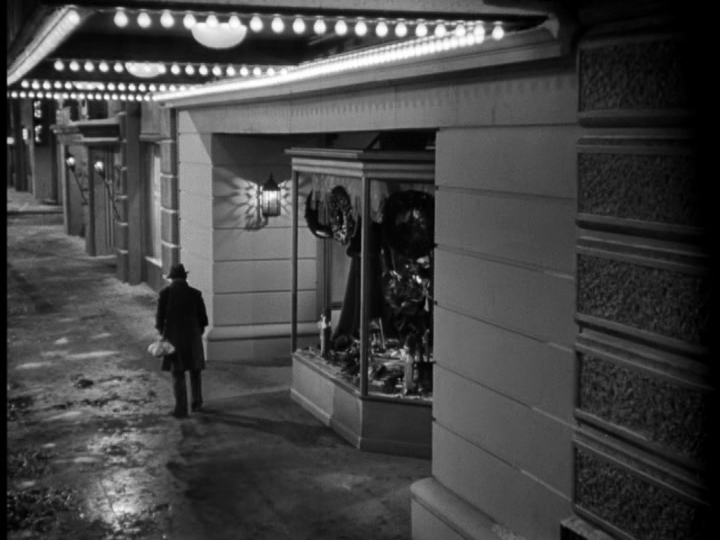We tend to have a lot of egg whites on hand during the months of December and January as a result of nog making and my absolute favorite way to use them up is in Jeffrey Morgenthaler’s amaretto sour, which Imbibe notes has effectively become the standard way of making it. And for good reason! He boasts that it’s “the best Amaretto Sour you’ve ever had in your life,” and although I can’t claim to have verified this claim through extensive testing, that’s mostly because I haven’t felt the need to try another recipe since discovering this one. Here’s how you make it:
1 1/2 ozs. Amaretto (Disaronno)
3/4 oz. Cask-proof bourbon (1792)
1 oz. Lemon juice
1 tsp. 2:1 Simple syrup
1/2 oz. Egg white, lightly beaten
Dry shake all ingredients, then add ice and shake again. Strain into a chilled rocks glass with one big ice cube, making sure to get as much froth out of the shaker as you can, and garish with a cherry and a lemon twist.
My go-to bourbon for this drink is Maker’s Mark Cask Strength, but they make the spirit I featured in last month’s aged eggnog and I wanted to mix things up a bit. I’m glad I did: 1792 is just about as good of a value and contributes an even higher ABV, which is essential for cutting the sweetness of the amaretto and creating the “warm glowing warming glow” I’m looking for in the dead of winter. It results in a richer texture as well, and you definitely want to use 2:1 simple syrup for the same reason. Disaronno is delicious and easy to find and also has a great origin story: according to the company’s website, the woman the artist Bernardino Luini (a pupil of Leonardo di Vinci) chose as a model for the Madonna in one of his frescoes created it as a thank you gift. And so it was that this month’s pairing suggested itself, because when I think about painting and the winter holidays, one movie immediately springs to mind: Scarlet Street, which ends with perhaps the most cynical use of Christmas music in the history of cinema. Here’s a picture of my Kino Video DVD release:
It can also be streamed on Prime Video with a subscription or on Apple TV+ for a rental fee, and some people may have access to it via Kanopy through a license paid for by their local academic or public library as well.
Scarlet Street begins with a flurry of symbolism. An expensive-looking car pulls up to a building. As an organ grinder entertains its glamorous passenger:
The chauffeur ascends a set of stairs, walks past a woman knitting, and knocks on a door marked “private”:
Inside the men of J.J. Hogarth & Company celebrate Christopher Cross’s (Edward G. Robinson) 25 years with the firm as (hat tip: Joseph Gibson) cigar smoke rises unmotivated from the bottom of the frame:
The boss (Russell Hicks) quiets them and stands to make a speech:
Well boys, I hate to break up a good party, but you can’t keep a woman waiting, can you? You know how it is, boys. I can see you all understand, alright! Well, believe you me boys, I’ve had the time of my life tonight. And speaking of time, I have here a 14-karat, 17-jewel timepiece. And that’s only right because the man I’m giving it to is a 14-karat, 17-jewel cashier.
Cross reads the engraving and stammers out a brief speech of gratitude. Everyone belts the refrain of “For He’s a Jolly Good Fellow,” then J.J. treats Chris and his co-worker Charlie (Samuel S. Hinds) to fancy (“it’s made special for me, a dollar apiece”) cigar before excusing himself. As the others rush to the window to ogle the “dame” he can’t keep waiting:
Chris and Charlie quietly make their own exit. Charlie doesn’t have an umbrella, so Chris sees him to his bus. As they stand waiting for it, Chris tells Charlie that he wonders what it’s like to be loved by a young girl like the one their boss is seeing and that he dreamt of being an artist and still paints every Sunday. “Well, that’s one way to kill time,” Charlie replies. Chris invites Charlie to come see him the next day when the bus arrives, then goes looking for the East Side subway. Lost among the “mixed up” streets of Greenwich Village, he witnesses what he believes to be a mugging:
Emboldened by drink, Chris charges forward to defend the damsel in distress, then braces for an answering blow that never comes:
The woman (Joan Bennett) he has “saved,” who is wrapped in a cellophane raincoat, first tests her jaw:
Then checks on her assailant. Chris runs off to find a policeman. When they return, the man is gone. The woman, whose name we will soon learn is Kitty March, tells the cop he went thataway, then says to Chris, “let’s get out of here.” He consents to take her home, and with that his fate is sealed. We are barely ten minutes into a film with a runtime of 102.
A major topic of debate among film scholars and critics is whether or not Chris is too pathetic to be someone audiences can identify with. And to be sure, if you’re going to put an apron like this on, it really should be to make a statement, not just to prevent your clothes from getting dirty!
But I agree with Kino’s DVD commentator David Kalat that Edward G. Robinson’s performance is “extraordinarily warm and humane” and recognize a great many things in the character he brings to life, especially his struggle to find a sustainable balance between the hobby that brings him happiness and the career that pays his bills. In a book-length interview with Peter Bogdanovich, director Fritz Lang claims that “Robinson’s fate in the picture is the fate of an artist who cares much more for his paintings than for gaining money.” He then specifically references the scene in which Chris discovers that Kitty has been signing her name to his paintings so that she can sell them and instead of getting mad at her, acquiesces to the scheme: “it’s just like we were married, only I take your name,” he says.
In a chapter for Joe McElhaney’s A Companion to Fritz Lang, Vinzenz Hediger argues that for Chris, “the realization of his dream to be recognized as an artist, even though it only happens through the intermediary of the woman he loves, in combination with that woman’s attention, appears to be the only moment of genuine happiness he has experienced in life.” This is consonant with Jeanne Hall’s observation in a Film Criticism article called “‘A Little Trouble With Perspective’: Art and Authorship in Fritz Lang’s Scarlet Street“ that far from painting being his escape from a loveless marriage like many scholars claim, Chris’s hobby was what brought him to his wife Adele (Rosalind Ivan) in the first place when he rented a room from her in order to save money for paint. Chris describes what happened next to Charlie thusly: “oh she was sweet–butter wouldn’t melt in her mouth. And, uh, well, you know how these things go.” To translate this into (somewhat) contemporary terms, yada yada yada, now he has to paint in the bathroom:
In Kitty he thinks he has found not just a young girl who loves him, but a young girl who loves him and his work. Per Hediger, “[t]he recognition may be false but it can be lived vicariously so long as it is grounded in true devotion,” and for the length of time Chris believes it to be true, he blossoms. Dan Duryea’s Johnny Prince (more on him in a second) notes that Damon Janeway (Jess Barker), the art critic who has “discovered” Kitty, thinks that the work he produces during this time are the “best things [he’s] done,” and I agree with scholar Tom Gunning when he argues in The Films of Fritz Lang: Allegories of Vision and Modernity that “Chris’s identification with the image of a woman could also be seen as an essential step in his development as an artist, keeping him alive to his polymorphic childlike perversity, but gaining authority rather than regressing through it.” After all, as Gunning goes on to point out, “Chris’s lack of interest in signing his own name to his works and his feminine alter-ego, both recall the fundamental avant-gardist gestures of Marcel Duchamp: signing several works with the name of his feminine alter-ego (whom he had himself photographed as, in drag) Rose Selavy (glossed as Eros, c’est la vie).”
Chris loves to paint, but he’s also lonely. His marriage to Adele is a bitter disappointment because it not only failed to solve the latter problem, but jeopardizes his freedom to engage in the former activity when she threatens to give all his paintings and supplies to the junkman in retaliation for him not buying her a radio. Kitty gives him sustenance until, abruptly, she doesn’t. Although Mark Osteen is technically correct when in his Journal of Film and Video article “Framed: Forging Identities in Film Noir” he pinpoints Chris’s disavowal of his identity as an artist as the moment “Chris’s painter self dies along with the lover and the cashier,” but that self likely would have starved to death anyway even if Chris had responded to Kitty laughing in his face and saying “you’re old and ugly and I’m sick of you” by calmly placing the fateful ice pick back on the table he knocked it off of and walking away instead of, well, you know:
One of my favorite things about Scarlet Street is its treatment of Chris’s paintings, which were modeled after the work of Henri Rousseau and created by a friend of Fritz Lang named John Decker (who I assume was also responsible for the illustrations by “Tony Rivera” which adorn the walls of the apartment Chris rents for Kitty). Hall is right that the movie is unusual in the way it “encourages viewers to reflect on the socially-constructed and class-based nature of art and aesthetics by insistently raising questions about the quality of Chris’s work and persistently refusing to answer them.” Like Kitty, I personally think this one is pretty excellent:
And although “Self-Portrait” is a title he will later bestow upon a painting of Kitty, one of the film’s many dissolves suggests that maybe it would have been better applied here:
Meanwhile, the other painting which inspired this month’s photograph certainly is interesting:
Some of the other dissolves are absolutely brilliant, including these two involving of Johnny which Gunning discusses at length:
In the process of doing so, Gunning describes Johnny as being “[a]s nasty, slimy, sadistic, cowardly, lazy, ignorant and venial a character as one could find in a Hollywood film,” which is accurate. Dan Duryea is so effective in this role that I wonder if it was detrimental to his career–I recently saw Thunder Bay for the first time, and although his Johnny Gambi turns out to be a perfectly decent person, I kept waiting for him to do something horrible, which was incredibly distracting! The distinctively out-of-style hat he dons in Scarlet Street is practically a character in its own right, as evinced by these two different close-ups:
And as documented by Mike Grost, the rest of Johnny’s wardrobe is interesting, too. Other things to love or hate include the masterful use of practical effects to make studio lot exterior scenes look like they were shot on location:
And the dirty dishes in Kitty’s kitchen sink, aka my worst nightmare:
What makes this one of the most unforgettable movies ever made, though, is the way it ends. In a shocking plot twist, Johnny is sent to the electric chair for the murder committed by Chris.
Unable to shake the vision of Johnny and Kitty happily together in the afterlife, Chris tries to commit suicide, but is unsuccessful.
Years pass in an instant and now he is a derelict shuffling down the street to the tune of the Christmas carol “O Come All Ye Faithful,” which as Robert B. Pippin notes in Fatalism in American Film Noir “is a hymn to the baby Jesus”:
The soundtrack then shifts to “Melancholy Baby,” which is utilized throughout the film in a variety of versions for a wide range of purposes. One way to look at this is as simply a logical accompaniment to the painting which two men are carrying out of the gallery he’s passing by, which is of course his/Kitty March’s aforementioned “Self-Portrait.”
But Pippin has another interpretation:
The Christian notion of eschatological time suggests both that there is this radical revolutionary possibility in historical time, such that everything is different, full of new possibilities, after the Incarnation, and that an individual can be born again, decisively become almost literally a different person, free of the burden of the past, forgiven, after having been saved. Lang’s irony about this assumption is absolutely withering. The ‘baby’ of real relevance is not the baby Jesus, but, the music reveals, our melancholy baby. The aspiration for such revolutionary change is paired musically with the reality of the stuck-in-time, repetitive melancholy baby. And that means not only ‘melancholy’ because this tempting Christian way of thinking about time is naïve, but because melancholy is melancholy, not mourning in Freud’s famous sense. It is the impossibility of ‘moving on’ from a traumatic event, a compulsive need to suffer it all again and again, a refusal of the liberating work of mourning (a fate, in other words).
Wow! The soundtrack then shifts back to a Christmas carol, this time “Jingle Bells.” There is, again, an obvious explanation: the gallery owner Dellarowe (Arthur Loft) is saying to his customer (Constance Purdy), “well, there goes her masterpiece. I really hate to part with it.” To which she replies, “for ten thousand dollars, I shouldn’t think you’d mind!” So the jingling bells are those of the cash register.
But Pippin’s reading does this one better: “[t]he fate that Christianity naïvely believes can be mastered is not cosmic or divine fate but a socioeconomic, drastic restriction of possibilities, and it appears here as all powerful.” Whichever view you subscribe to, Scarlet Street‘s final images are independently shattering. Chris beholds the painting, but his expression barely changes. He puts his head down and resumes his slow walk:
Suddenly, all the people disappear:
It is, as Gunning describes it, “[a]s if a neutron bomb had exploded.” We hear Kitty’s voice whisper “jeepers I love you Johnny” one final time, and with that it’s all over.
Brrr. Typically I recommend mixing up the drinks in these posts before the movie I’m pairing them with starts, but it in this case you might want to save it for the end because you’re going to need something to warm you up afterward!
Cheers!
All original photographs in this post are by Marion Penning, aka my loving wife. Links to all of the entries in this series can be found here.
